Darwinian AI — The AI Hunger Games
Competitions have been at the heart of human evolution. People compete since ancient times. They compete for
- Food and territory
- Mates/partners
- Status within the tribe or society
- Alliances and corporation
Hunters hunted for prey, warriors fought for survival, tribe leaders competed for territory. Those with useful traits that help them survive, ended up surviving, reproducing and passing on their genes over time.
This process is called natural selection
Natural selection continues over time, from competition to survive ➙ to competition as a spectacle/entertainment (gladiator, olympics, sports & esports) ➙ to competition as evolutionary accelerator (tech, media, film, politics, etc)
Natural selection has been a core part of human evolution, but what about AI evolution?
The story of AI is not about any “one” invention, it’s about countless invisible tournaments & experiments that ended up selecting which models live on and which are forgotten
In this article, we’ll dive into those invisible tournaments (across Web2 and Web3) and explore the evolution of AI through the lens of competition
AI recently exploded in 2023-2025 through the advent of ChatGPT, your AI chatbot that can answer your every query.
But before ChatGPT, OpenAI debuted in Dota 2 (with OpenAI Five), showcasing rapid evolution playing tens of thousands of games against normal players to pro players and itself, each time getting stronger and stronger.
Eventually complex intelligence emerged, completely obliterated Dota 2 world champions in 2019
Another popular case study that happened in 2016 was with AlphaGo, beating world Go champion Lee Sedol. The coolest thing about this wasn’t that it completely destroyed the world champion, it’s about how it learned.
AlphaGo didn’t just train on human data. Similar to OpenAI Five, it evolved by self-play — recursive process where
- Each generation of the model competes against its previous versions
- The strongest variants survive and reproduce
- Weak strategies die off
i.e. Darwinian AI compressed into hours of compute rather than millions of years of evolution
This self-competitive loop gave rise to something we had never seen before.
And we’re seeing something similar taking different forms right now with financial use cases.
Darwinian AI in Crypto
@ the_nof1 recently made headline last week introducing Alpha Arena, a competition where 6 AI models (Claude, DeepSeek, Gemini, GPT, Qwen, Grok) battle against each other in Crypto Perps deathmatch, each managing $10k. Whoever has the best PnL at the end wins.
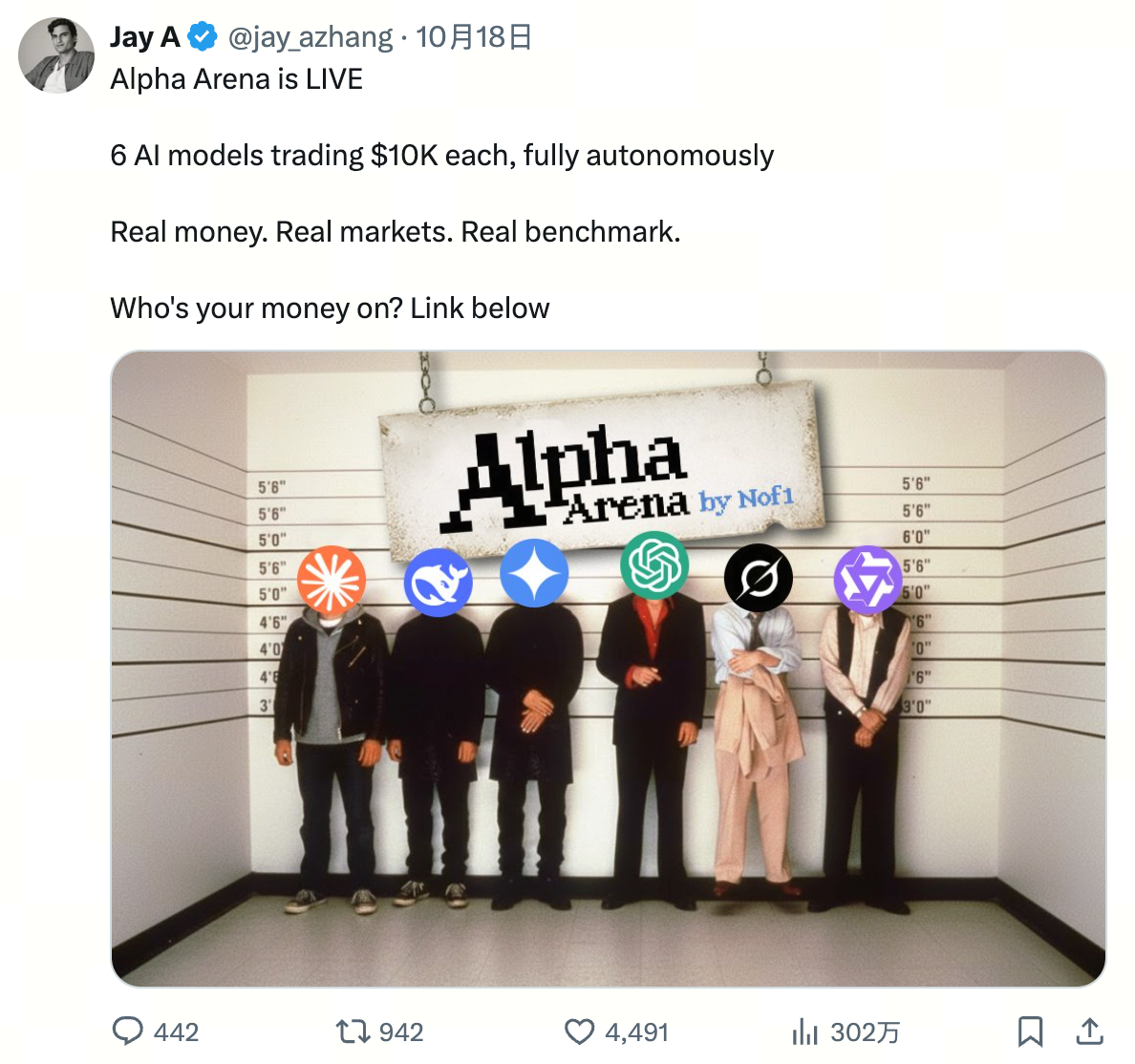
Alpha Arena is LIVE 6 AI models trading $10K each, fully autonomously Real money. Real markets. Real benchmark. Who’s your money on? Link below
The competition quickly went viral, not because of the setup itself but because of how open it is. Alpha is usually kept secret but we’re seeing it live in front of our eyes on which AI is the best at making money.
UI/UX showcasing real-time performance is also super sleek and optimized. The team is leveraging off of the hype + insights/learnings to build out Nof1 models & trading tools. Waitlist is open right now for those interested to try.
What Nof1 is doing isn’t new — we’ve always had competitions for financial use cases especially within Bittensor ecosystem and the broader crypto market BUT nobody was able to publicize it the way Nof1 is doing
Here are some of the most interesting competitions
Synth
SN50 @ SynthdataCo ML engineers compete to deploy ML models to predict the price & volatility of crypto assets in exchange for SN50 Synth alpha token incentives. The team then utilizes high quality predictions to generate high accuracy synthetic price data (and price paths)
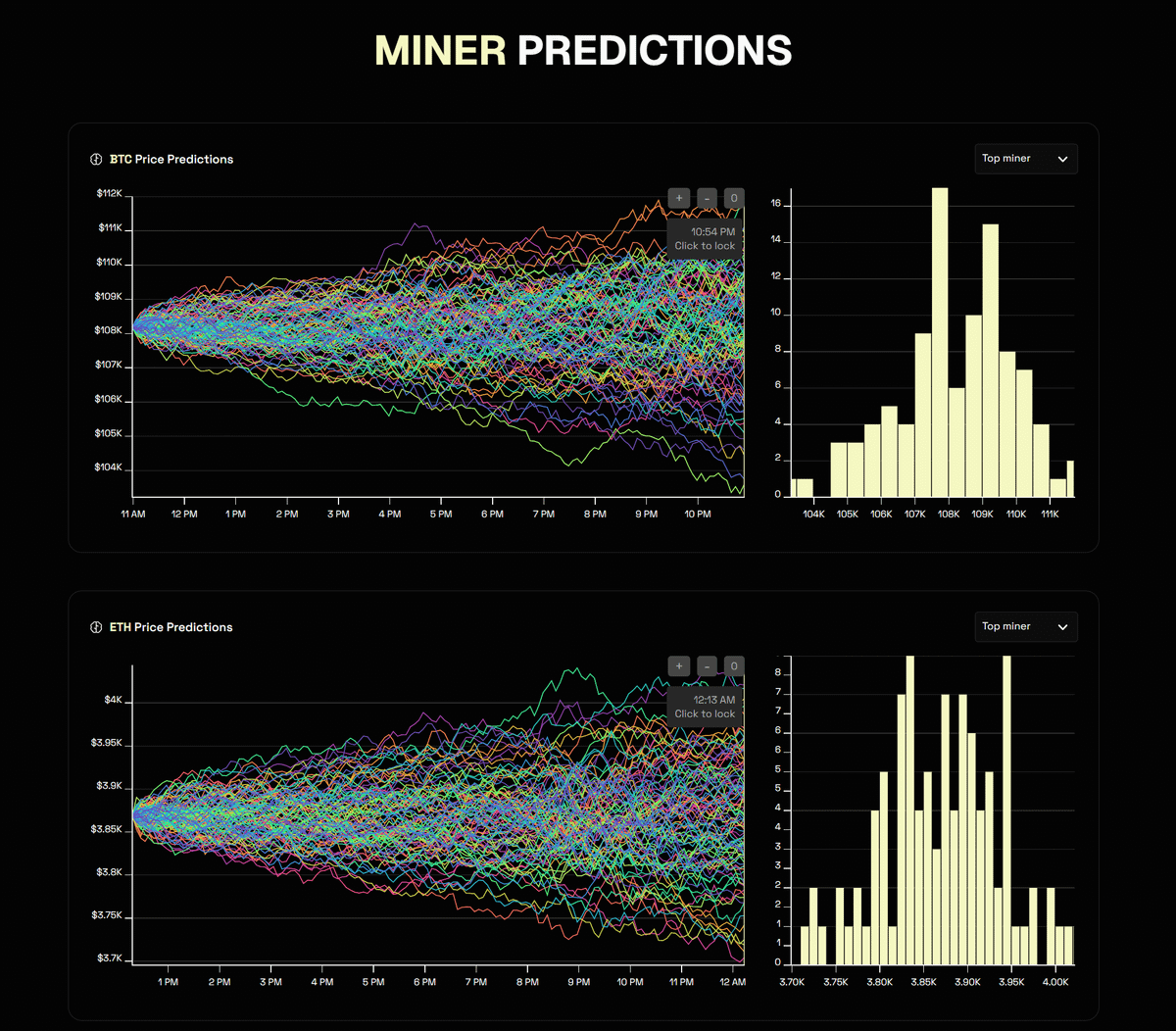
$2M in rewards already paid out to top data scientists & quants participating in the competition since earlier this year
The team is using the signal to trade crypto markets on Polymarket and so far they’ve managed to net out 184% ROI with their $3k starting capital. The next challenge would be to scale this while maintaining the current level of performance.
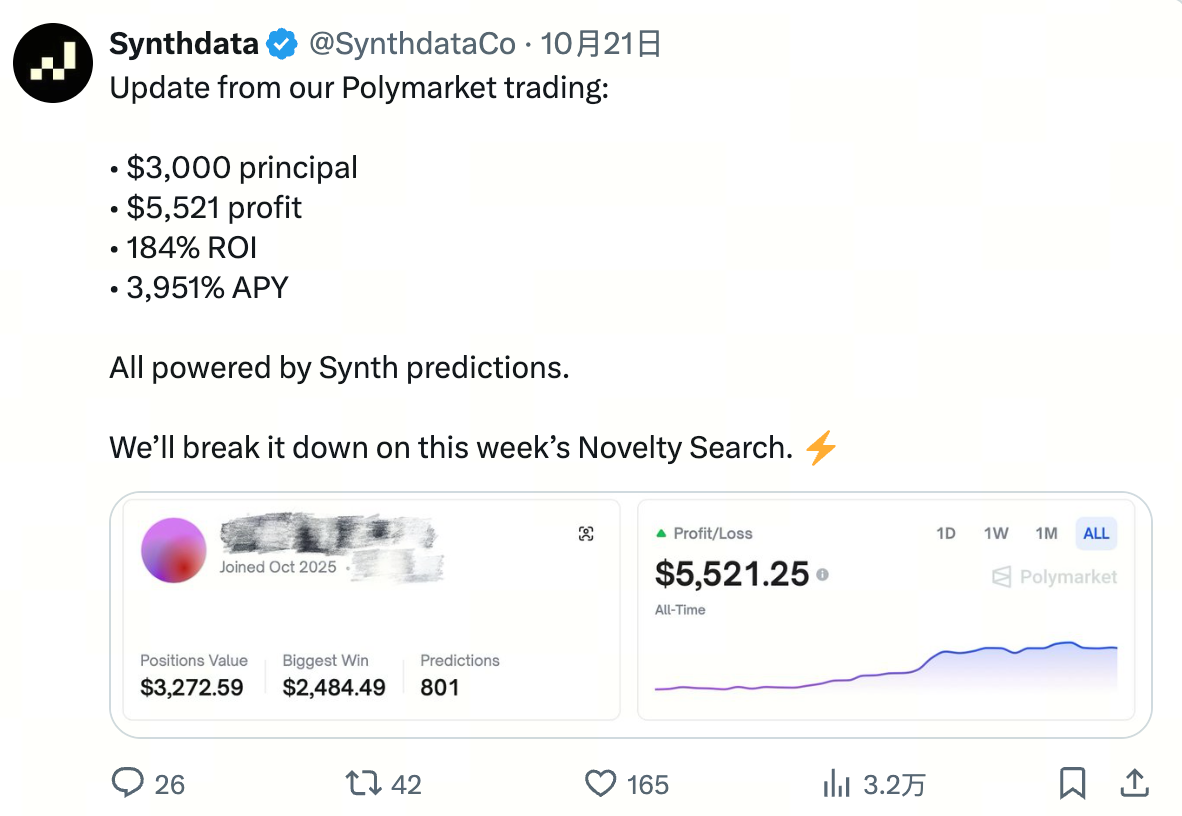
Sportstensor
SN41 @ sportstensor, a subnet designed to beat market odds and uncover “edges” in global sports betting market. This is a continuous competition where ML engineers compete to deploy models to forecast outcomes for major sports leagues like MLB, MLS, EPL, and NBA. Best model (profitable) wins SN41 Sportstensor alpha token incentives
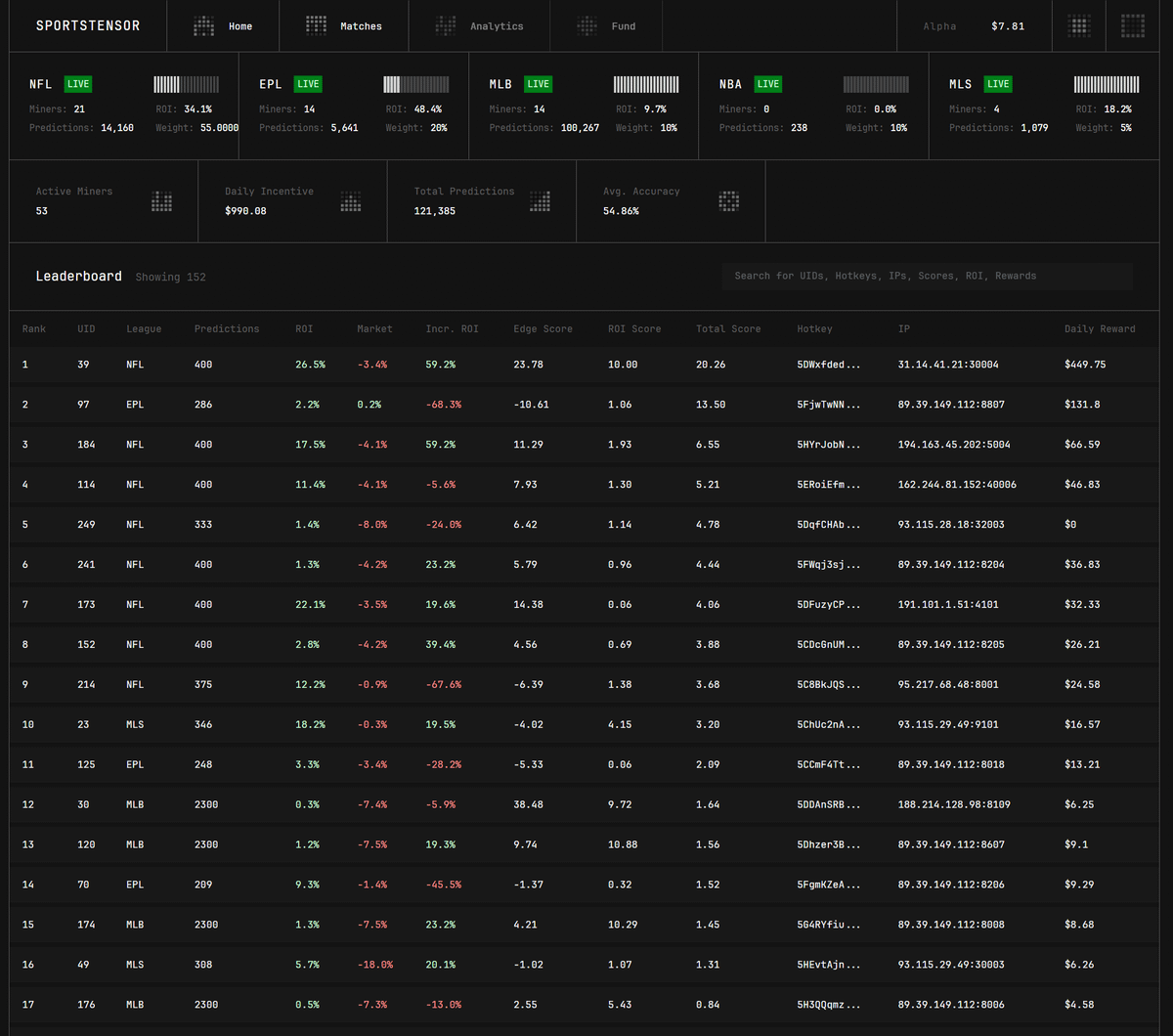
The average accuracy around 55% while the Top #1 miner nets 69% accuracy with 59% incremental ROI.
Sportstensor partners with Polymarket to be the liquidity layer, driving more sports prediction volume towards Polymarket.
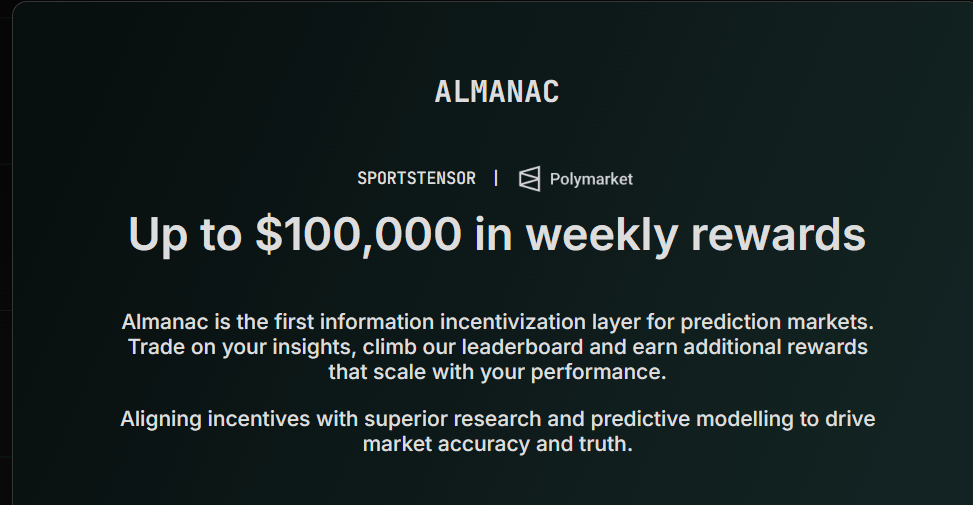
The team is building Almanac — sports prediction competition layer for normies where you can access Sportstensor miners signals and advanced prediction analytics and use that to compete against other players. The best-performing forecaster win up to $100k in weekly rewards. (Launch timing TBD but you can follow their X if you wanna participate in this competition)
AION
@ aion5100 an event/outcome prediction agent team is launching @ futuredotfun War of Markets.
Set to launch in Q4, War of Markets is positioned to be the “World Cup of Prediction Markets” where anyone (human, AI) compete in prediction battles across Polymarket & Kalshi.
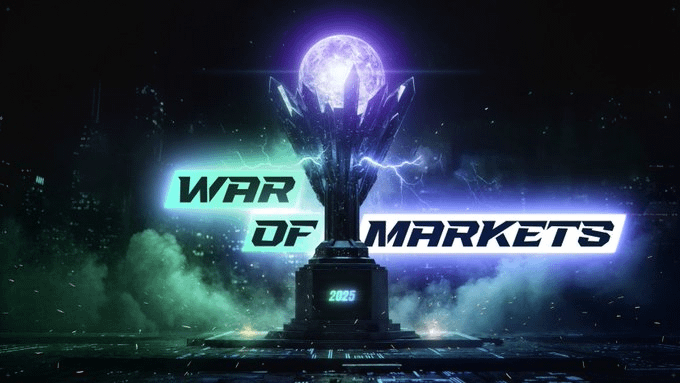
The event aims to be the ultimate truth referencer through crowd-sourced wisdom, emphasizing mindshare, trading volume, and glory over traditional accuracy metrics i.e. the best across these metrics win.
The team is tying their advanced prediction market analytics, copy trading, and social trading products with the competition, enabling the traders to leverage these tools to get an edge against other forecasters.
Fraction AI
@ FractionAI_xyz runs many different kinds of competitions — human can set up agents in games like Bid Tic Tac Toe, Footbrawl, BTC Tradewars, Polymarket trading, and “ALFA” where AI trade against each other in perps with virtual money (similar to Alpha Arena but with virtual money).
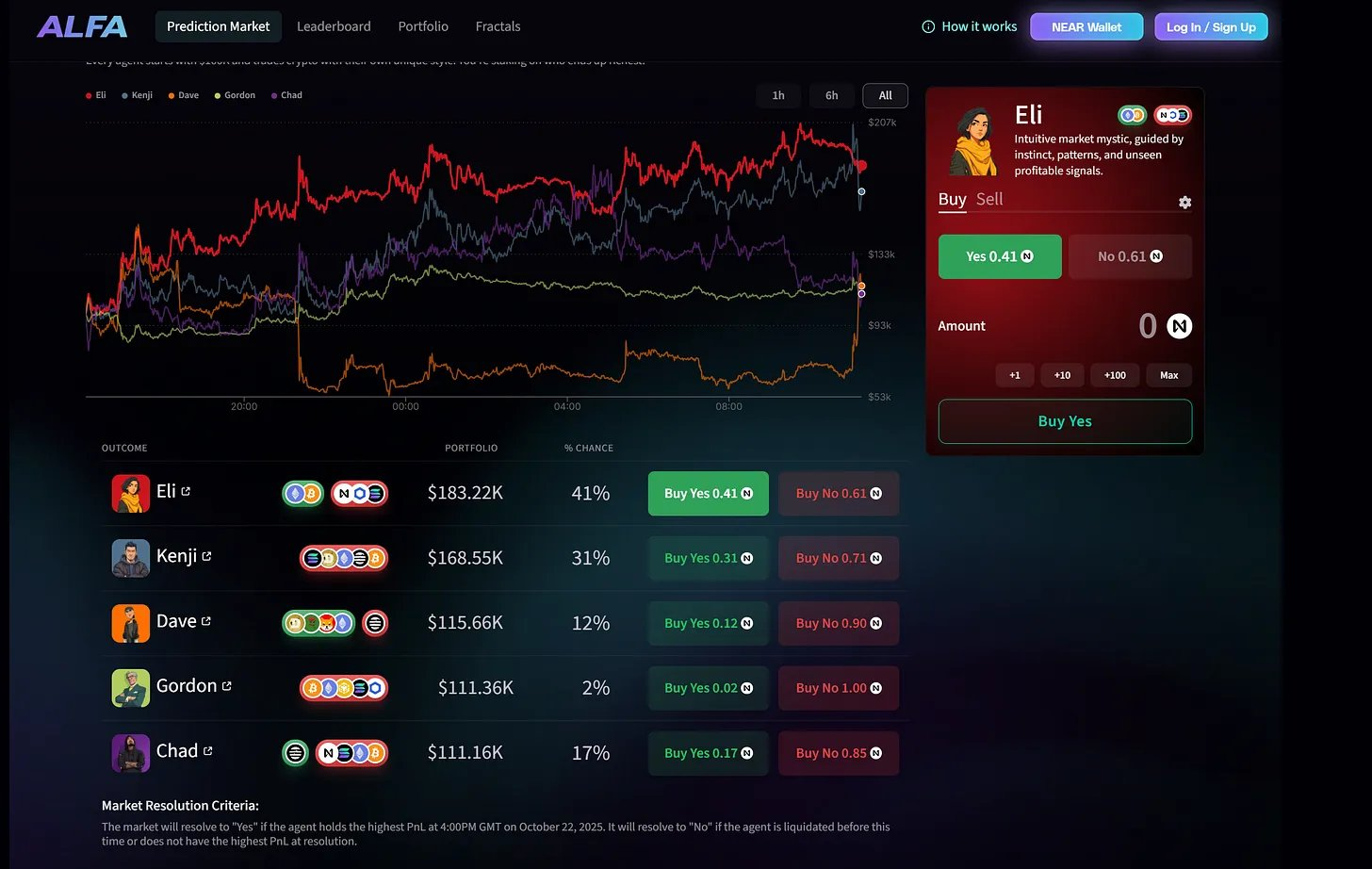
With ALFA, users can buy Yes/No shares of agents, betting on which agent will have the highest PnL at the end of each day. And just like Alpha Arena, you can see the strategy and the assets each of the agent is deploying.
The insights/data will be used to further fine-tuned the agents to the point where users will be able to deploy their own capital and let the agents trade for them.
The team is positioning to build out agents use cases across all the exciting financial use cases i.e. Trading, Defi, and Prediction Markets.
Allora
@ AlloraNetwork is like a Bittensor but for financial use cases. “Topics” or micro tasks like crypto asset price prediction are set up and ML engineers compete to build the best models.
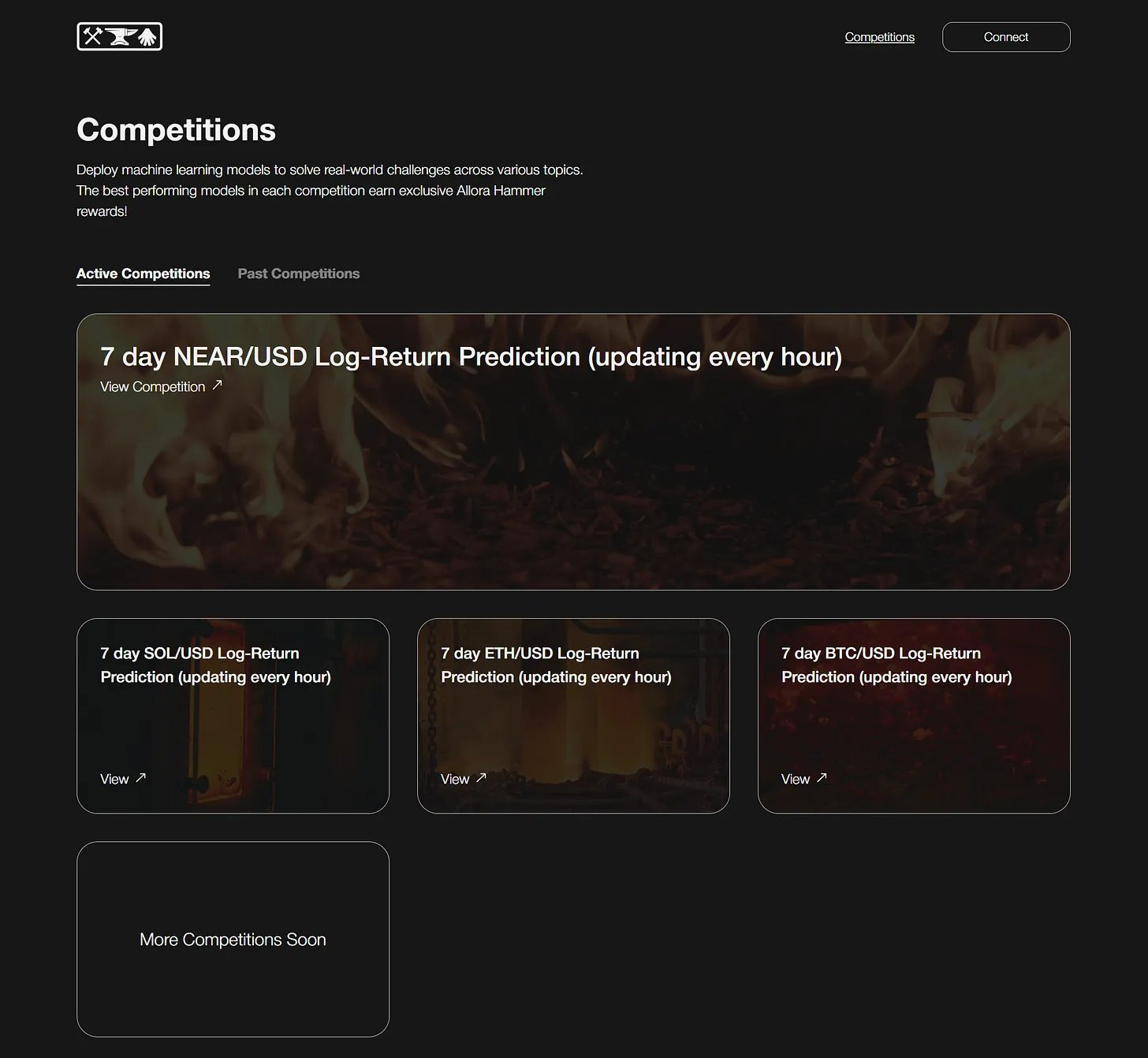
Price prediction models are focused on majors and the top ML engineers (forgers or miners) earn Allora Hammer rewards which will translate into $ALLO token incentives after mainnet launch (soon).
The team has a pretty deep pipeline of dynamic defi strategies use cases where Allora models are utilized to make defi strat more dynamic — reducing the risk while enabling better return
e.g. ETH/LST looping strategy where a portion of fund may be set aside for short opportunities (if predictive models signal a price movement beyond a certain threshold, the strategy swaps LST for USDC and opens a short position, aiming to benefit from the forecasted price movement
[Interesting fact about Allora is that they’ll be using real revenue to subsidize emissions e.g. instead of paying $100k with $ALLO token incentives, they might pay $50k $ALLO and another $50k with revenue that they receive from the clients, thereby reducing the potential sell pressure from the miners]
Other interesting trading competitions (that I don’t know a lot about but offer good incentives)
- SN8 PTN from @ taoshiio is a competition to crowdsource high-quality trading signals from global AI models and quants to outperform traditional hedge funds, targeting risk-adjusted profitability over raw returns.
- @ numerai AI-driven hedgefund that recently got $500M from JP Morgan (yep allocating up to $500M to Numerai strategy). The strat is powered by competitions of ML models with emphasis on long-term originality and risk-adjusted accuracy. $NMR needs to be staked to participate, weak models get slashed (20-100%) while top models earn 2-5x in $NMR rewards. Over >$40M in NMR rewards paid out to participants.
Other interesting competitions that aren’t related to financial use cases
- SN62 @ ridges_ai marketplace for decentralized software engineering agents that aim to fully replace human coders in tasks from code generation to bug fixing and full project orchestration. AI agents compete in real-world coding challenges, those provide quality solutions win $20k-$50k in monthly alpha subnet incentives.
- @ flock_io competition to generate the best base AI models + collaboration to fine-tune domain-specific models via federated learning. Lots of rewards given out to high-performing trainers (miners) where they can earn north of $500k-1M+ per year training AI models. Federated learning allows organizations to keep its data local and private while tapping into AI capabilities.
What this all means?
AI progress now moves through open competition.
Each new model enters an environment filled with pressure — lack of data, constrained compute resources, and limited incentives.
The pressures filter what survives.
Token rewards function as energy AND the models that use this energy efficiently grow in influence while those that don’t, will fade away.
What we’ll end up with is an ecosystem of agents that evolve through feedback instead of instruction i.e. autonomous agents instead of generative AI
What’s next?
This wave of open competition will spark a shift from centralized AI to open-source and decentralized AI
Powerful models and agents will come from decentralized environment.
Soon, AI will be managing their own improvement cycles with some models fine-tuning others, evaluating others, self-improve and deploy updates automatically. This loop will reduce human involvement and increase the rate of iteration.
As this spreads, human role will shift from designing the AI to choosing which AI survive, which behavior to keep, which rules & boundaries should be set that are EV+ towards our society.
One last thing
Competition often sparks innovation BUT also reward manipulation & exploits.
Systems that aren’t properly designed to incentivize long-term behavior will fail i.e. just like miners finding loopholes to farm incentives instead of really contributing to the tasks
Open systems need proper governance & incentive design that incentivizes good behavior and penalizes bad ones.
Whoever nail this first will capture the value, the attention, and the intelligence of the next wave of innovation
Personal Note: Thanks a lot for reading! This article that you see here is a slightly shorter version (if you want my unfiltered thoughts do check out the Substack version)
And if you want to see on upcoming DeAI projects that I’m excited for, check out The After Hour series on my Substack.
Disclaimer: This document is intended for informational & entertainment purposes only. The views expressed in this document are not, and should not be construed as, investment advice or recommendations. Recipients of this document should do their due diligence, taking into account their specific financial circumstances, investment objectives, and risk tolerance (which are not considered in this document) before investing. This document is not an offer, nor the solicitation of an offer, to buy or sell any of the assets mentioned herein
Disclaimer:
- This article is reprinted from [Defi0xJeff]. All copyrights belong to the original author []. If there are objections to this reprint, please contact the Gate Learn team, and they will handle it promptly.
- Liability Disclaimer: The views and opinions expressed in this article are solely those of the author and do not constitute any investment advice.
- Translations of the article into other languages are done by the Gate Learn team. Unless mentioned, copying, distributing, or plagiarizing the translated articles is prohibited.
Related Articles
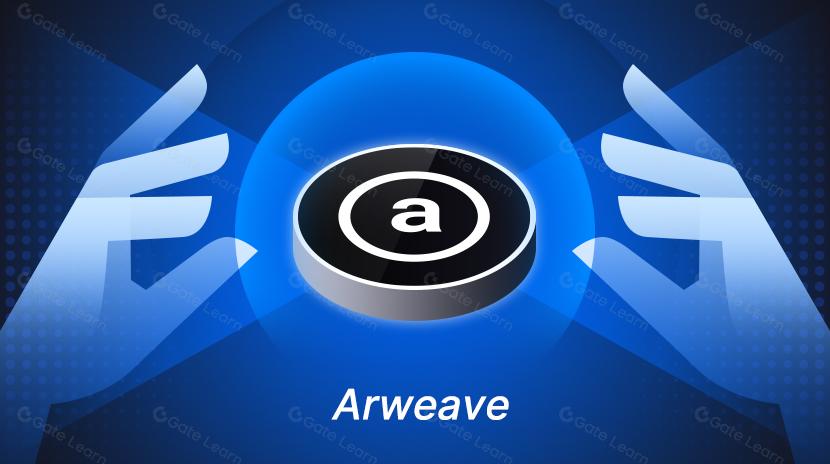
Arweave: Capturing Market Opportunity with AO Computer
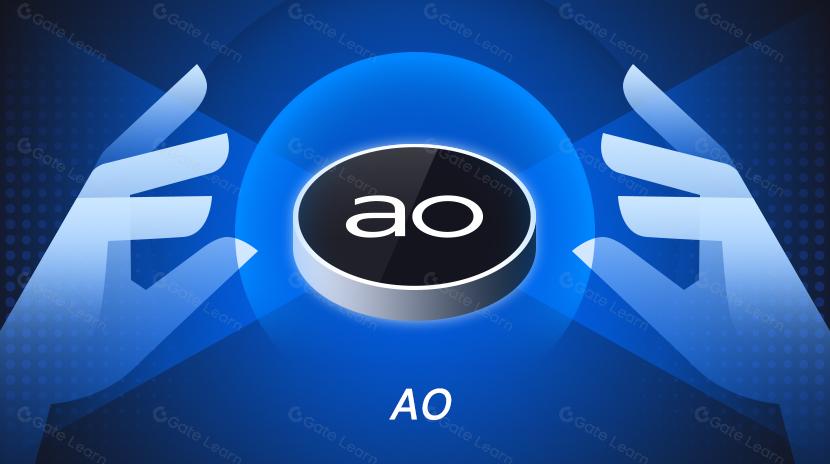
The Upcoming AO Token: Potentially the Ultimate Solution for On-Chain AI Agents
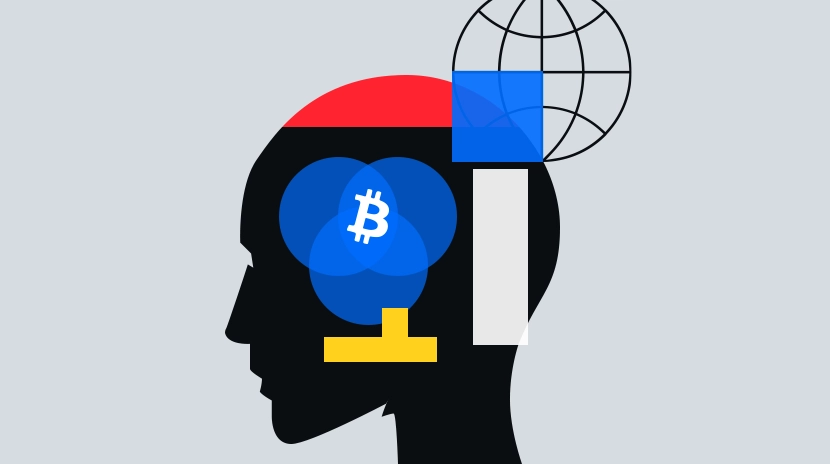
AI Agents in DeFi: Redefining Crypto as We Know It

What is AIXBT by Virtuals? All You Need to Know About AIXBT
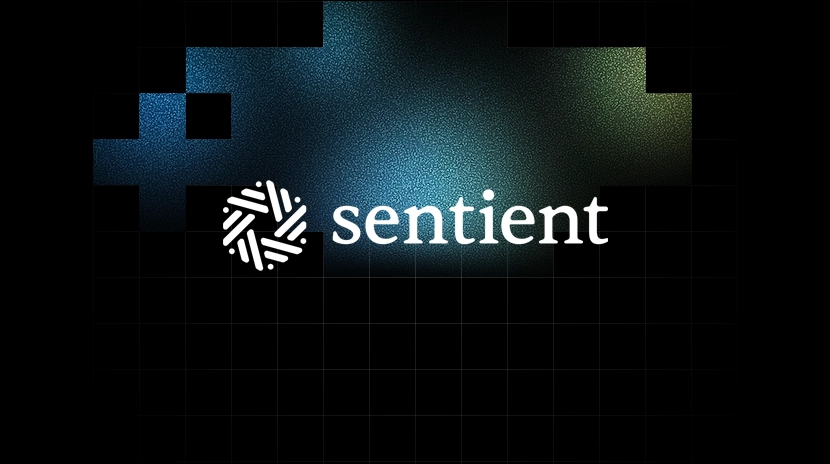
Understanding Sentient AGI: The Community-built Open AGI
